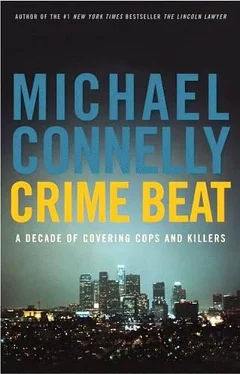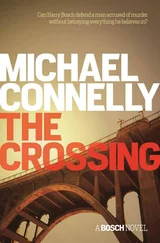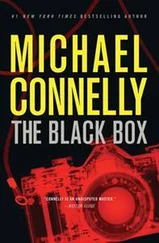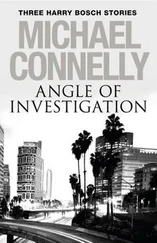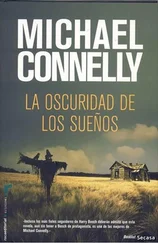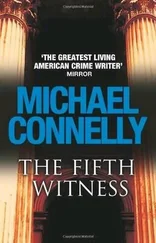Schroeder quickly became re-addicted to both drugs and burglary. The two were the all-consuming parts of his life. He could not have one without the other. He began cruising the neighborhoods of South Broward wearing a phony Florida Power & Light shirt and carrying a screwdriver.
On Easter Sunday 1986 Gladys Jones became one of Billy Schroeder’s statistics. The revelation came to her like a cold finger running down her spine when she opened the front door of the home where she lived alone near Hollywood. Immediately she saw the doors of the dining room buffet standing open and its contents spilled on the floor. She turned to the left and saw the empty shelf in the living room, the TV gone.
She knew right away what had happened. It came to her with the weakness in her knees and the catch in her breath. Gladys, who is in her 60s and asked that her real name not be used, turned and ran.
It was two hours before she returned. That was after the police searchers had come and gone, the K-9dog had come and gone, and her son-in-law had even searched the house. Gladys walked unsteadily into her home to learn what the invader had taken. She found that the floors were covered with things apparently considered by the burglar and then discarded. The jewelry boxes were dumped on the bed, Gladys’ underwear drawer had been rifled, and the Easter basket for her granddaughter was turned over on the kitchen floor.
About halfway through this sad inventory she realized that mostly it was her peace of mind that had been taken. She asked her daughter to stay with her. She couldn’t sleep alone in the house.
Broward CountySheriff ’s Investigator Bill Cloud has worked burglary cases for nine years. His experience has taught him two constants: That nowadays almost all burglars break into homes to get money for drugs, and that drug-fueled burglars do very careless work – to the point of hitting homes in their own neighborhoods before moving on to other areas.
When in early 1986Cloud began getting a number of similar Lake Forest burglary cases dropped on his desk, he figured he had one burglar out there hitting homes at a fast pace. So he took to the neighborhood streets and culled a list of suspects’ names from the steady cast of informants he maintains.
One of the names was Billy Schroeder’s. Cloud ran it through the crime computer and learned of Schroeder’s rap sheet. He then asked the Sheriff’s Office crime lab for a “zone run,” a comparison between Schroeder’s fingerprints and those found at burglaries in the patrol zone that included Lake Forest. It was a request that would take weeks because of the backlog of requests to the crime lab. While he was waiting, Cloud distributed fliers bearing Billy Schroeder’s 1983 mug shot to deputies and South Broward police departments. And he went out looking.
Billy Schroeder worked enviable hours, usually less than five hours a day. He worked when he had to, when the cocaine ran low and his body’s craving for it ran high. He would put on the FPL shirt and cap that he had had made at a flea market T-shirt concession, and clip a can of Mace to his belt. The getup made him a meter reader. He would drive a borrowed car through neighborhoods before and after lunch – 9 to 11 and 2 to 4 – the best times of finding empty homes. After spotting a target house he would just knock on the front door.
If somebody answered, Schroeder was ready with a variety of lines and would then move on. But if the knock went unanswered, he’d go around back – a meter reader doing his job – and break in after checking for alarm systems. With his screwdriver he was an expert at breaking locks and windowpanes, removing jalousie windows. He knew how to pop a sliding glass door in just the way that it would crumble into a pile of glass dust without noise enough to alert a neighbor.
Once inside, first to consider was the refrigerator, full of all the food he had neglected while binging on crack. After a snack, he’d grab a bag or a pillowcase, and then there were all those drawers and cabinets and hiding places to find. It was a quick operation: 10, maybe 15 minutes max. Cash and jewelry, guns if there were any, and on the way out he’d grab the big stuff, a TV or a VCR or both, the hot trade items in the crack houses of South Florida. “I didn’t care about being seen by neighbors or anybody,” he says. One time he broke in the front door of a home while a woman was watering flowers across the street. He just ran when she yelled. Once while driving through Miramar he saw a lighted Christmas tree through the front window of a house. He backed his car up, broke through the front window and loaded his car with gifts from beneath the tree, going back three times for more.
After every dayof burglary, Billy headed to the crack houses west of Hollywood to trade his goods. The drug peddlers who worked the perimeters of the houses called him the “gold man” because of the jewelry he always had for trade. On a good day, he’d have loot from four or five homes.
Schroeder kept nothing he stole, turned everything into crack and the cash he needed to pay for the hotel rooms where he binged on cocaine, crashed and hid. Detective Cloud estimates that if Schroeder stole $2 million in merchandise, his return was not much better than a dime on the dollar: a few hundred thousand dollars’ worth of cash and drugs.
“Almost every single day I was robbing another family,” Schroeder says. “It started with one burglary a day to support my habit for the day. I needed $200. Then it got to be $300 and I had to rob two houses. Then it got to be $500 a day and four houses and on and on from there.
“It got to be a game. I didn’t care about anything else. I would drive down a street and decide, Eenie, meenie, minie, moe, that’s the house I’m going to do.
“I was living for my drug. It was my life, my future. I spent every penny I had on it.
“And I was scared. I figured the cops were looking for me because of my prints so I was living in hotels, moving almost every day. I never came out except to rob another house or get drugs. I would stay in the room behind a chain, a deadbolt and a desk pushed up against the door.”
The zone run with Billy Schroeder’s fingerprints that Detective Cloud had asked for came back with several positive IDs. Cloud asked the State Attorney’s Office for a felony warrant, a request that would take several weeks to go through the legal morass. Still, Cloud was now sure who his man was. He just had to find him.
Meanwhile, detectives in other departments – Hollywood, Hallandale, Miramar and North Miami – were learning that Schroeder was an increasingly active break-in artist.
“It got so that I could just pick up a burglary report and be able to tell Billy had been there,” says Hallandale Detective Dermot Mangan. “When it was a daytime job with the place ransacked and food eaten, it was usually him.
“We were all looking for him,” recalls Cloud. “I once got word that he was going to a certain store to cash a check. I waited in there and when he saw a man in a jacket and tie he ran. He was so paranoid, anybody in a suit was a cop. That time he just happened to be right. We kept just missing him like that. At the motels, on the streets. Sometimes by minutes. It became a mission to get him.”
Gladys Jonesspent the time after the burglary arranging for new lights to be placed outside her home, having the bushes cut away from the windows, putting steel mesh screens over every window.
“I hate it,” she says. “The house looks awful and it makes me feel like I’m the prisoner when I’m the victim. I’m still afraid to be here by myself.”
One night long after the burglary, Gladys was dressing for an evening out when she reached into her jewelry box for a certain gold necklace. It was gone, one of the belongings she hadn’t noticed missing after the burglary. The discovery brought the whole thing, the intrusion, the loss, the anger, all back down on her. Most of all it rekindled the fear.
Читать дальше
